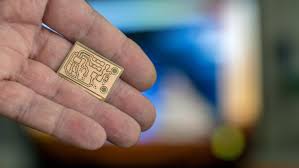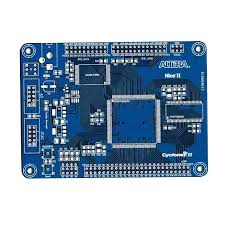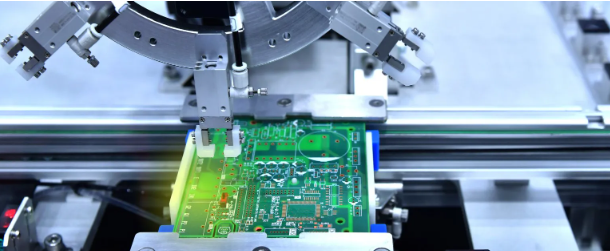Fast pcb prototyping
Benefits Of Fast PCB Prototyping For Startups
Fast PCB prototyping offers numerous benefits for startups, providing a competitive edge in the rapidly evolving tech landscape.
One of the primary advantages is the significant reduction in development time.
Traditional PCB prototyping methods can be time-consuming, often taking weeks or even months to complete. In contrast, fast PCB prototyping leverages advanced manufacturing techniques and streamlined processes to produce prototypes in a matter of days. This accelerated timeline allows startups to quickly iterate on their designs, identify potential issues, and implement necessary changes without substantial delays.
Moreover, the cost-effectiveness of fast PCB prototyping cannot be overstated.
Startups typically operate with limited budgets, and the ability to produce prototypes quickly and affordably is crucial. By minimizing the time and resources spent on each iteration, startups can allocate their financial resources more efficiently. This cost-saving aspect is particularly beneficial during the early stages of product development when multiple design revisions are often required. Additionally, many fast PCB prototyping services offer scalable solutions, enabling startups to order small quantities initially and scale up production as needed, further optimizing their budget.
Another significant benefit is the enhancement of product quality and reliability.
Fast PCB prototyping allows for thorough testing and validation of designs before committing to full-scale production. Startups can identify and rectify design flaws, ensuring that the final product meets the desired specifications and performance standards. This iterative testing process not only improves the overall quality of the product but also reduces the risk of costly recalls or failures in the market. Consequently, startups can build a reputation for delivering reliable and high-quality products, fostering customer trust and loyalty.
Furthermore, fast PCB prototyping facilitates innovation and creativity within startups.
The ability to quickly test and refine new ideas encourages experimentation and exploration of novel concepts. Startups can push the boundaries of traditional design approaches, leading to the development of unique and differentiated products. This innovative edge is essential in a competitive market, where differentiation can be the key to capturing market share and attracting investment. By leveraging fast PCB prototyping, startups can stay ahead of the curve and continuously bring fresh and exciting products to market.
In addition to fostering innovation, fast PCB prototyping also enhances collaboration and communication within startup teams.
The rapid turnaround time allows for more frequent feedback loops between designers, engineers, and other stakeholders. This collaborative environment ensures that everyone is aligned and working towards the same goals, ultimately leading to more cohesive and well-executed products. Moreover, the ability to quickly produce physical prototypes facilitates better communication with potential investors, partners, and customers, as tangible prototypes are often more compelling and easier to understand than theoretical designs.

Lastly, fast PCB prototyping supports a more agile and responsive approach to market demands.
Startups can quickly adapt to changing customer needs, industry trends, and technological advancements. This agility is crucial in a dynamic market, where the ability to pivot and respond to new opportunities can determine the success or failure of a startup. By incorporating fast PCB prototyping into their development process, startups can maintain a flexible and responsive strategy, ensuring they remain relevant and competitive.
In conclusion, the benefits of fast PCB prototyping for startups are manifold, encompassing reduced development time, cost savings, improved product quality, enhanced innovation, better collaboration, and increased agility. By embracing this advanced prototyping approach, startups can navigate the challenges of product development more effectively and position themselves for long-term success in the competitive tech landscape.
Key Techniques For Rapid PCB Prototyping
Fast PCB prototyping is an essential aspect of modern electronics design, enabling engineers to quickly iterate and refine their designs. To achieve rapid prototyping, several key techniques are employed, each contributing to the efficiency and effectiveness of the process.
One of the primary methods is the use of advanced software tools.
These tools facilitate the design and simulation of PCB layouts, allowing engineers to visualize and test their circuits before physical production. By leveraging these software solutions, designers can identify and rectify potential issues early in the development cycle, thereby reducing the time and cost associated with multiple iterations.
In addition to software tools, the choice of materials plays a crucial role in fast PCB prototyping.
High-quality substrates and conductive materials ensure that the prototypes are not only produced quickly but also meet the necessary performance standards. For instance, using materials with low dielectric constants can enhance signal integrity, which is particularly important in high-frequency applications. Furthermore, selecting materials that are readily available and easy to work with can significantly shorten the lead time for prototype production.
Another critical technique is the adoption of automated manufacturing processes.
Automation in PCB fabrication, such as automated optical inspection (AOI) and automated soldering, can drastically reduce the time required for production while maintaining high levels of accuracy and consistency. These automated systems can quickly identify defects and ensure that each prototype meets the specified design criteria. Consequently, the reliance on manual inspection and correction is minimized, leading to faster turnaround times.
Moreover, the integration of rapid prototyping technologies, such as 3D printing, has revolutionized the PCB prototyping landscape.
3D printing allows for the creation of complex PCB structures that would be challenging to produce using traditional methods. This technology enables the rapid production of custom enclosures and components, which can be seamlessly integrated with the PCB. As a result, engineers can test the complete system in a shorter timeframe, accelerating the overall development process.
Collaboration and communication among team members are also vital for fast PCB prototyping.
Utilizing collaborative platforms and tools can streamline the sharing of design files, feedback, and revisions. This ensures that all stakeholders are on the same page and can contribute to the refinement of the prototype in real-time. Effective communication helps in identifying potential issues early and facilitates quick decision-making, which is essential for maintaining the momentum of the prototyping process.
Furthermore, engaging with experienced PCB manufacturers can provide valuable insights and support for rapid prototyping.
These manufacturers often have specialized knowledge and equipment that can expedite the production of high-quality prototypes. By leveraging their expertise, designers can avoid common pitfalls and ensure that their prototypes are produced efficiently and to the required specifications.
Lastly, iterative testing and validation are indispensable techniques in fast PCB prototyping.
By conducting thorough testing at each stage of the prototyping process, engineers can identify and address any functional or performance issues promptly. This iterative approach not only enhances the reliability of the final product but also reduces the likelihood of costly redesigns and delays.
In conclusion, fast PCB prototyping is a multifaceted process that relies on advanced software tools, appropriate material selection, automated manufacturing, rapid prototyping technologies, effective collaboration, experienced manufacturers, and iterative testing. By employing these key techniques, engineers can significantly accelerate the development of their PCB designs, ensuring that they meet the desired performance standards and are ready for market deployment in a timely manner.

Common Challenges In Fast PCB Prototyping And How To Overcome Them
Fast PCB prototyping is an essential process in the development of electronic devices, enabling engineers to quickly test and iterate on their designs. However, this rapid pace often introduces a set of unique challenges that can impede progress if not properly managed.
One of the most common challenges is the risk of design errors.
When working under tight deadlines, the likelihood of overlooking critical design flaws increases. To mitigate this, it is crucial to implement thorough design reviews and utilize advanced design software that can automatically detect potential issues. Additionally, involving a multidisciplinary team in the review process can provide diverse perspectives, further reducing the risk of errors.
Another significant challenge is the availability of components.
In fast prototyping, the need for specific components can sometimes lead to delays if those components are not readily available. To overcome this, it is advisable to maintain a well-stocked inventory of commonly used components and establish strong relationships with reliable suppliers. Furthermore, designing with flexibility in mind, such as selecting components with multiple sourcing options, can help ensure that the prototyping process remains on schedule.
Thermal management is also a critical concern in fast PCB prototyping.
As electronic devices become more compact and powerful, managing heat dissipation effectively becomes increasingly important. Poor thermal management can lead to overheating, which can damage components and affect the overall performance of the device. To address this, engineers should incorporate thermal analysis early in the design phase and consider using materials with high thermal conductivity. Additionally, implementing proper heat sinks and ventilation can significantly improve thermal performance.
Signal integrity is another area where challenges frequently arise.
High-speed circuits are particularly susceptible to issues such as crosstalk, electromagnetic interference (EMI), and signal degradation. To ensure signal integrity, it is essential to follow best practices in PCB layout, such as maintaining proper spacing between traces, using ground planes, and employing differential signaling where appropriate. Moreover, conducting signal integrity simulations can help identify potential problems before the physical prototype is built.
Manufacturability is a further challenge that cannot be overlooked.
A design that looks perfect on paper may encounter difficulties during the manufacturing process. To avoid this, it is important to collaborate closely with the manufacturing team from the outset. Understanding the capabilities and limitations of the manufacturing process can inform design decisions, ensuring that the prototype can be produced efficiently and without unexpected issues. Design for manufacturability (DFM) guidelines should be adhered to, and regular communication with the manufacturer can help preempt potential problems.
Time constraints are an inherent challenge in fast PCB prototyping.
The pressure to deliver a functional prototype quickly can lead to shortcuts that compromise quality. To manage this, it is essential to establish a clear project timeline with realistic milestones. Utilizing agile development methodologies can also be beneficial, allowing for iterative progress and continuous feedback. This approach helps ensure that the project remains on track while maintaining high standards of quality.
In conclusion, while fast PCB prototyping presents several challenges, these can be effectively managed through careful planning, collaboration, and the use of advanced tools and techniques. By addressing design errors, component availability, thermal management, signal integrity, manufacturability, and time constraints proactively, engineers can streamline the prototyping process and achieve successful outcomes.

Innovations In Fast PCB Prototyping Technologies
In recent years, the field of printed circuit board (PCB) prototyping has witnessed significant advancements, driven by the need for faster development cycles and the increasing complexity of electronic devices. Innovations in fast PCB prototyping technologies have revolutionized the way engineers and designers approach the development of electronic circuits, enabling them to bring products to market more swiftly and efficiently. These advancements are not only enhancing the speed of prototyping but also improving the accuracy and reliability of the final products.
One of the most notable innovations in fast PCB prototyping is the advent of advanced computer-aided design (CAD) software.
Modern CAD tools offer a plethora of features that streamline the design process, such as real-time error checking, automated component placement, and sophisticated routing algorithms. These tools significantly reduce the time required to design a PCB, allowing engineers to focus on optimizing the performance and functionality of their circuits. Moreover, the integration of simulation capabilities within CAD software enables designers to test and validate their designs virtually, identifying potential issues before physical prototypes are produced.
In addition to software advancements, the development of high-speed manufacturing techniques has played a crucial role in accelerating PCB prototyping.
Traditional PCB manufacturing processes, such as photolithography and etching, are being supplemented and, in some cases, replaced by additive manufacturing technologies. Techniques like 3D printing and inkjet printing allow for the rapid production of PCB prototypes with complex geometries and fine features. These methods not only reduce the time required for fabrication but also minimize material waste, making them more environmentally friendly.
Furthermore, the use of advanced materials in PCB prototyping has contributed to faster and more reliable prototyping processes.
High-performance substrates, such as polyimide and liquid crystal polymer, offer superior thermal and electrical properties compared to conventional materials like FR-4. These advanced materials enable the production of PCBs that can withstand higher temperatures and frequencies, making them suitable for a wide range of applications, from consumer electronics to aerospace and defense.
Another significant innovation in fast PCB prototyping is the implementation of automated assembly technologies.
Automated pick-and-place machines, coupled with surface-mount technology (SMT), have drastically reduced the time required to assemble components onto PCBs. These machines can place thousands of components per hour with high precision, ensuring consistent quality and reducing the likelihood of human error. Additionally, advancements in soldering techniques, such as reflow soldering and selective soldering, have further streamlined the assembly process, enabling the rapid production of fully functional PCB prototypes.
Moreover, the rise of online PCB prototyping services has democratized access to fast prototyping technologies.
These services allow designers to upload their PCB designs, receive instant quotes, and have their prototypes manufactured and delivered within days. This accessibility has empowered startups and small businesses to compete with larger companies by reducing the barriers to entry in the electronics market.
In conclusion, the innovations in fast PCB prototyping technologies have transformed the landscape of electronic design and manufacturing. The integration of advanced CAD software, high-speed manufacturing techniques, advanced materials, automated assembly technologies, and online prototyping services has significantly reduced the time and cost associated with PCB prototyping. As these technologies continue to evolve, they will undoubtedly drive further advancements in the electronics industry, enabling the development of more sophisticated and reliable electronic devices at an unprecedented pace.






